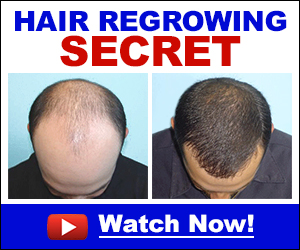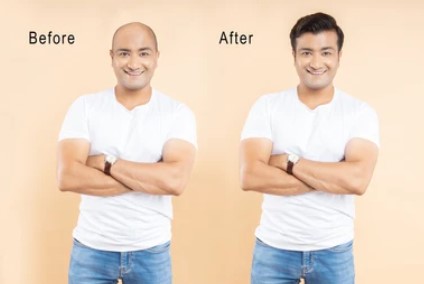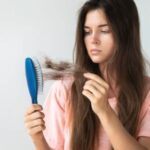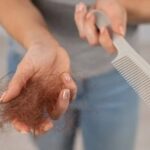Medicine to Grow Hair
Medicine to Grow Hair, Hair loss can be a distressing experience for both men and women. It can affect one’s self-esteem, confidence, and overall well-being. Fortunately, medical advancements have led to the development of various medicines and treatments aimed at promoting hair growth and preventing further hair loss. In this comprehensive article, we will explore the different medications available to help you regrow your hair, their mechanisms of action, potential side effects, and the factors you should consider before choosing a treatment.
Understanding Hair Loss – Medicine to Grow Hair
Before delving into the world of hair growth medications, it’s important to have a basic understanding of why hair loss occurs. Hair loss, or alopecia, can be caused by a variety of factors, including genetics, hormonal imbalances, medical conditions, and lifestyle choices.
Types of Hair Loss
- Androgenetic Alopecia: This is the most common type of hair loss and is often hereditary. It affects both men and women and is often referred to as male-pattern baldness and female-pattern baldness.
- Alopecia Areata: This is an autoimmune condition that causes hair loss in small, round patches. It can affect people of all ages.
- Telogen Effluvium: This type of hair loss is often triggered by stress, illness, or medication. It results in a sudden and significant shedding of hair.
- Scarring Alopecia: This is a less common form of hair loss that occurs when hair follicles are destroyed and replaced with scar tissue.
- Traction Alopecia: This is often caused by hairstyles that put excessive tension on the hair, such as tight braids or ponytails.
Understanding the specific type of hair loss you’re experiencing is crucial in choosing the right treatment.
Hair Growth Medications
Several medications are available to help stimulate hair growth or prevent further hair loss. Let’s explore the most common options.
1. Folifort (Hair Growth) Medicine to Grow Hair
Mechanism of Action: Folifort is a topical medication available over the counter. It works by increasing blood flow to the hair follicles and extending the hair’s growth cycle. It’s available in both liquid and foam forms and is typically applied directly to the scalp.
Effectiveness: Folifort has been shown to be effective in promoting hair growth, especially in the crown and vertex areas of the scalp. Results can vary from person to person, and it may take several months of consistent use to see significant improvements.
Side Effects: Some people may experience scalp irritation, itching, or dryness. In rare cases, folifort can cause heart palpitations or other systemic side effects.
2. Finasteride (Propecia)
Mechanism of Action: Finasteride is an oral prescription medication that works by inhibiting the conversion of testosterone into dihydrotestosterone (DHT), a hormone that contributes to hair loss. By reducing DHT levels, finasteride helps to slow or even reverse hair loss.
Effectiveness: Finasteride has been shown to be effective in preventing further hair loss and, in some cases, promoting hair regrowth, particularly in the crown area. It’s typically more effective in men than in women.
Side Effects: Common side effects include decreased libido, erectile dysfunction, and breast tenderness. It’s important to consult with a healthcare provider before starting finasteride, especially if you have a history of prostate issues.
3. Dutasteride – Medicine to Grow Hair
Mechanism of Action: Dutasteride is another oral prescription medication that, like finasteride, inhibits the production of DHT. It is often used to treat benign prostatic hyperplasia (enlarged prostate) but is sometimes prescribed off-label for hair loss.
Effectiveness: Dutasteride may be more effective than finasteride in reducing DHT levels, but it is not yet approved by the FDA specifically for hair loss treatment.
Side Effects: Similar to finasteride, dutasteride can lead to sexual side effects, and it should be used under the guidance of a healthcare professional.
4. Low-Level Laser Therapy (LLLT)
Mechanism of Action: LLLT involves using low-level lasers or light-emitting diodes (LEDs) to stimulate hair follicles. The exact mechanism of action is not fully understood, but it is believed to improve blood flow and promote cellular activity in the scalp.
Effectiveness: LLLT is available in various forms, including laser combs, helmets, and caps. While some users report positive results, the evidence supporting its efficacy is mixed.
Side Effects: LLLT is generally considered safe and non-invasive, with few reported side effects.
5. Platelet-Rich Plasma (PRP) Therapy
Mechanism of Action: PRP therapy involves drawing a small amount of the patient’s blood, processing it to concentrate the platelets, and then injecting the platelet-rich plasma into the scalp. Platelets contain growth factors that may stimulate hair follicles.
Effectiveness: The effectiveness of PRP therapy is still a subject of ongoing research. Some studies suggest that it can promote hair growth and improve hair thickness.
Side Effects: Side effects are typically minimal, with some patients experiencing mild pain or swelling at the injection site.
6. Hair Transplant Surgery
Mechanism of Action: Hair transplant surgery involves removing hair follicles from one part of the body (usually the back or sides of the scalp) and transplanting them to areas with thinning or no hair. This procedure is often used for more advanced cases of hair loss.
Effectiveness: Hair transplant surgery is generally considered highly effective in restoring a natural-looking head of hair. The results are permanent and can significantly improve your appearance.
Side Effects: Potential side effects include scarring, infection, and the possibility of grafts not taking as expected.
7. Topical Corticosteroids
Mechanism of Action: Topical corticosteroids are anti-inflammatory medications that can help reduce itching and inflammation associated with certain types of hair loss, such as alopecia areata.
Effectiveness: Corticosteroids can help promote hair regrowth in some cases of alopecia areata. However, they are not typically used for androgenetic alopecia.
Side Effects: Prolonged use of corticosteroids on the scalp can lead to thinning of the skin and other side effects. These medications are usually prescribed and monitored by a dermatologist.
Considerations Before Choosing a Hair Growth Medication
When considering a medication or treatment for hair growth, there are several factors to keep in mind:
- Consult a Healthcare Professional: Before starting any hair growth medication, it’s essential to consult with a healthcare provider or a dermatologist. They can help diagnose the type of hair loss you’re experiencing and recommend the most appropriate treatment.
- Patience is Key: Most hair growth treatments take time to show results. It’s crucial to be patient and continue with the treatment as prescribed, even if you don’t see immediate improvements.
- Cost and Accessibility: Consider the cost and accessibility of the treatment you’re interested in. Some medications, like folifort, are available over the counter, while others, like finasteride, require a prescription.
- Potential Side Effects: Be aware of the potential side effects associated with the medication you choose. Discuss these with your healthcare provider and make an informed decision.
- Combination Therapy: In some cases, healthcare providers may recommend a combination of treatments for the best results. For example, using minoxidil and finasteride together may be more effective for some individuals.
- Lifestyle Factors: Your overall lifestyle, including diet, stress management, and general health, can also impact hair growth. Making healthy choices can complement the effects of your chosen medication.
Conclusion
Dealing with hair loss can be a challenging experience, but there are various medications and treatments available to help you regrow your hair and regain your confidence. Whether you opt for topical solutions like folifort, oral medications like finasteride, non-invasive options like LLLT or PRP therapy, or more invasive procedures like hair transplant surgery, it’s essential to consult with a healthcare professional to determine the best course of action for your specific situation.
Remember that results can vary from person to person, and it may take time to achieve the desired outcome. However, with the right treatment and a patient, informed approach, you can take steps toward achieving a fuller, healthier head of hair and boosting your self-esteem.
A perda de cabelo é uma preocupação comum e não existe uma solução única para todos. Ao compreender os vários medicamentos e tratamentos disponíveis, você pode tomar uma decisão informada sobre a melhor abordagem para tratar sua queda de cabelo e trabalhar para obter o cabelo que deseja.






